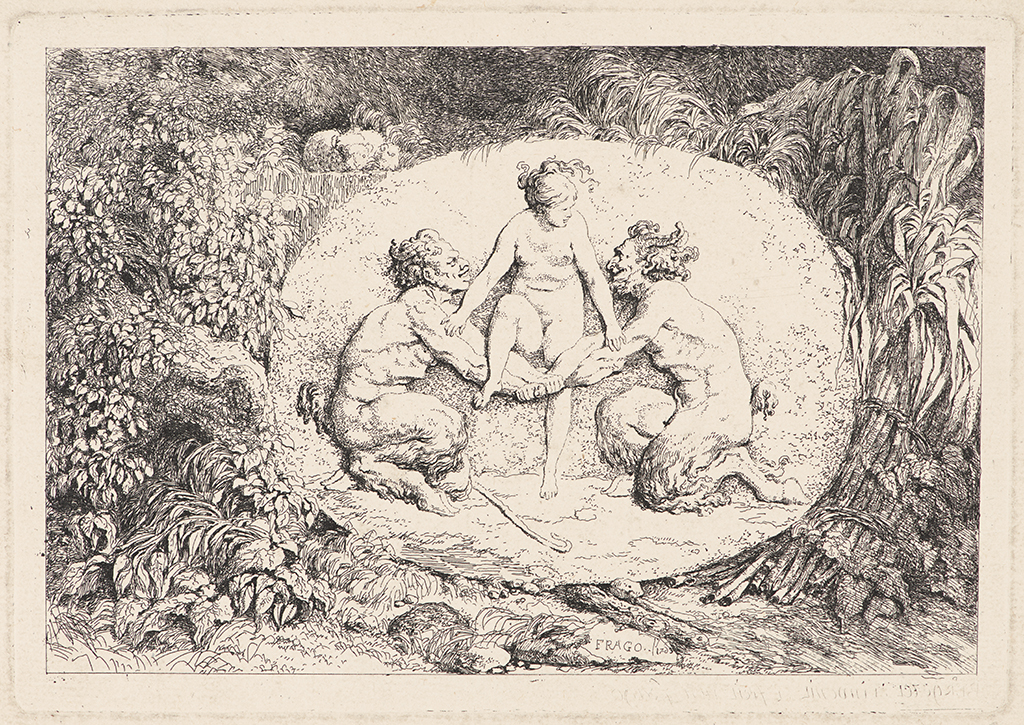Some of the most visually decadent art comes from the Rococo period in Western Europe. I am fascinated by this unapologetically self-indulgent period of European art, made right before the birth of the French Revolution. During the rise of the French Revolution, French art experienced a shift away from ancien régime celebration of the decorative, and towards the political and neoclassical, evoking the former democracies of Greece and Rome.
This etching, by Jean-Honoré Fragonard, the artist who created the famous painting, The Swing, in c. 1767–1768, is an example Rococo printmaking, and quite representative of Rococo style. Rococo is defined by its lightness both in spirit and in subject matter. This playfulness of this image is accentuated by beautiful foliate ornamentation encircling the figures of the print.
The lightness in atmosphere is appropriate to the lightness of the print’s subject. Fragonard’s works often suggest hedonistic impulses, and this print is no different. This is a Bacchanalian scene—a scene related to Bacchus, the god of wine, frivolity, and impulsivity. Here, two satyrs support a nymph in an oval relief sculpture. Satyrs often attempted to seduce or rape nymphs and mortal women, and therefore the presence of these mythological figures is suggestive of future sexual activity.
You can explore the intimate details of Nymph Supported by Two Satyrs on the Davison Art Center’s online collection, where a high-quality, zoomable image is available.
—Riley Richards ’21, Jim Dine Curatorial Intern at the Davison Art Center
Jean-Honoré Fragonard (French, 1732-1806). Nymph Supported by Two Satyrs, 1763. From Bacchanales. Etching on laid paper. Plate: 147 mm x 213 mm (5.79 in. x 8.39 in.). First of two states. Gift of George W. Davison (B.A. Wesleyan 1892), 1937. DAC accession no. 1937.D1.76.1. Open Access Image from the Davison Art Center, Wesleyan University. http://www.wesleyan.edu/dac/openaccess


